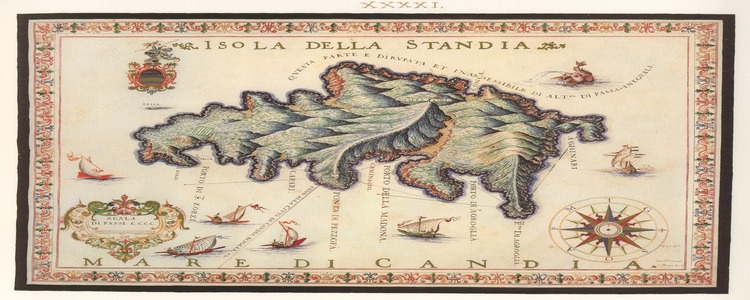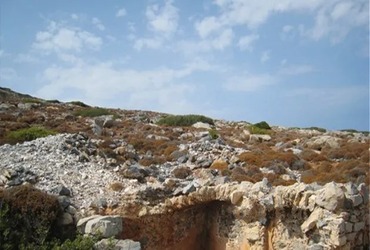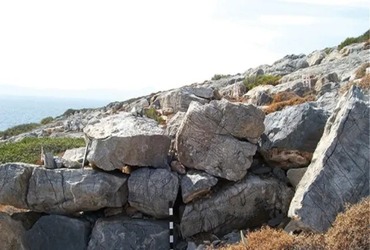DIA ISLAND

Legend has it that the island was created by Zeus (Dia is the name of Zeus in greek). A colossal sea monster approached him threateningly near Crete, but Zeus turned it to stone with a powerful thunderbolt, thus creating the island.
In antiquity, Zeus played an important role in seafaring, especially during the Minoan and Medieval times; during the Minoan times, the island was inhabited. It was an identification point for ships, but it also facilitated their entry into the port by creating a natural "barrier" to the northern winds. The surveys carried out by the French oceanographer Jacques-Yves Cousteau in 1974-1975 with a special submersible are of great interest. In 1976, near the bay of Agios Georgios, he discovered square and rectangular rocks forming an artificial breakwater on the seabed, and researchers called them the Cyclopean Walls. According to Cousteau, it was the largest and most important port of Knossos.
The archaeological surface survey on Dia began in 2010 and has yielded abundant findings, such as tools of carved stone from local flint, which make Dia a true prehistoric island that resembles a carving laboratory, as well as rich concentrations of ostraca from pottery, mainly plain but also some decorated, fragments of glass and, more rarely, metal objects; pieces of bricks and tiles, two 17th century coins, some pipes from the period of the Ottoman rule and several pieces of shells from the Second World War. These findings span a wide chronological range, from the Neolithic period to modern time, with a focus on the Early Bronze Age, then the Hellenistic, Roman, Byzantine, Venetian and Ottoman periods.

